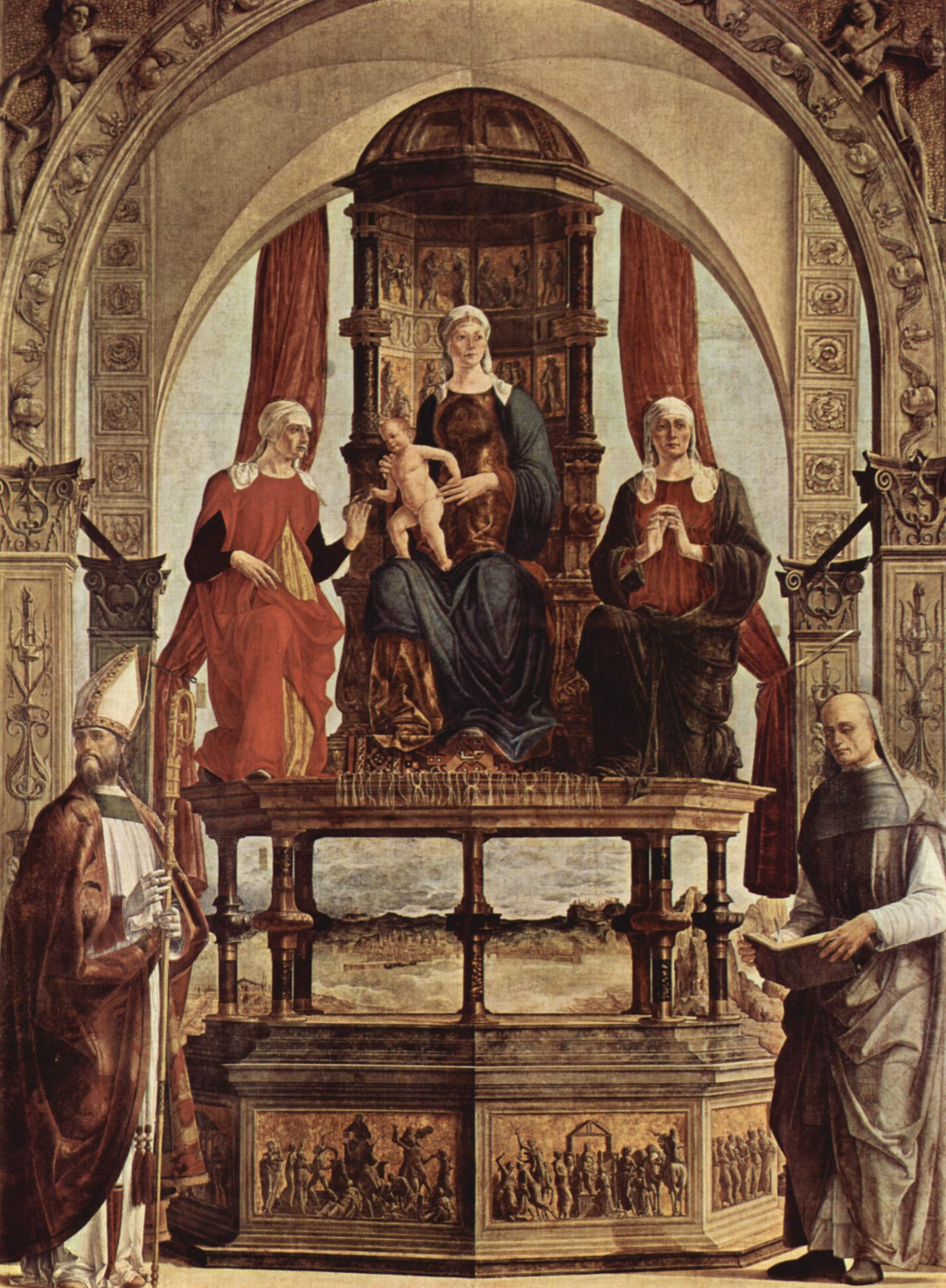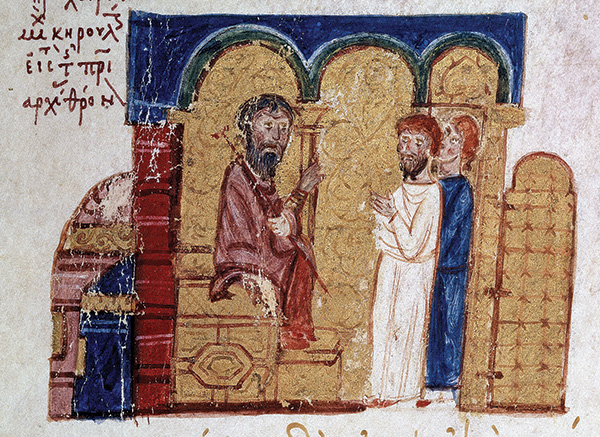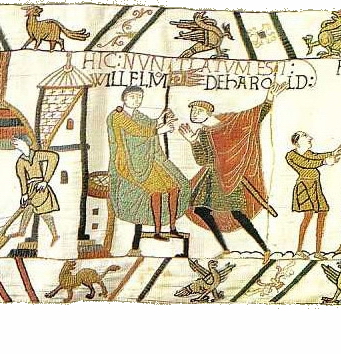|
Arialdo
Saint Arialdo (c. 1010 – June 27, 1066) is a Christian saint of the eleventh century. He was assassinated because of his efforts to reform the Milanese clergy. Life Arialdo was the child of a noble family, born at ''Cutiacum'' (Cucciago), near Como. After studying in Laon and Paris, he was made a canon in the cathedral city of Milan. According to Andrea da Parma, abbot of San Fedele di Strumi, who wrote a ''Vita'' concerning Arialdo, the church in Milan was rife with immoral clerics, fornicating, sleeping with prostitutes, lending money, and selling indulgences. According to Henry Charles Lea. marriage was common place among the Milanese clergy. Together with Bishop of Lucca Anselmo da Baggio (later Pope Alexander II), Arialdo headed the pataria, a movement that sought to reform Milan's simoniacal clergy. Due to this, he was excommunicated by the Bishop of Milan Guido da Velate. Pope Stephen IX removed the excommunication and Arialdo returned to Milan to continue his efforts t ... [...More Info...] [...Related Items...] OR: [Wikipedia] [Google] [Baidu] |
Pataria
The ''pataria'' was an eleventh-century movement focused on the city of Milan in northern Italy, which aimed to reform the clergy and ecclesiastic government within the city and its ecclesiastical province, in support of papal sanctions against simony and clerical marriage. Those involved in the movement were called ''patarini'' (singular ''patarino''), patarines or patarenes, a word chosen by their opponents, the etymology of which is unclear. The movement, associated with urban unrest in the city of Milan, is generally considered to have begun in 1057 and ended in 1075. The Pataria also came to oppose the power of the papacy and its moral corruptions. The Patarines were declared a heretical sect. They are considered by some as a precursor to the Protestant Reformation. History Early in the year 1057, a preacher named Ariald arrived in the city of Milan and began to preach against the Milanese clerics' custom of marrying. It is possible that he took advantage of the absence at ... [...More Info...] [...Related Items...] OR: [Wikipedia] [Google] [Baidu] |
Isolino Partegora
Isolino Partegora (known locally as ''Isulin'') is an islet situated at the centre of the gulf of Angera on Lago Maggiore, the only island on the lake to fall within the Italian region Lombardy. Most of the shoreline consists of marshy cane thickets, although there is a sandy beach at the southern edge of the island. The islet is about 96 by 36 m in size, with an area of roughly 3500 square metres. ''Sass margunin'', or ''margunée'', is a submerged erratic block lying some tens of metres to the west of the island. Near the shore facing the island is the Oasis of Bruschera natural park. The park occupies an area of approximately and is one of the last remaining flooded forests in Lombardy. It is said that the saints Giulio and Giuliano stopped on the island. Tradition also identifies Partegora as the location of the martyrdom of Arialdo Alciato, the Milanese deacon and Patarine reformist who was assassinated in 1076 at the prompting of his archbishop, Guido da Velate. In 17 ... [...More Info...] [...Related Items...] OR: [Wikipedia] [Google] [Baidu] |
Peter Damiani
Peter Damian ( la, Petrus Damianus; it, Pietro or '; – 21 or 22 February 1072 or 1073) was a reforming Benedictine monk and cardinal in the circle of Pope Leo IX. Dante placed him in one of the highest circles of '' Paradiso'' as a great predecessor of Francis of Assisi and he was declared a Doctor of the Church on 27 September 1828. His feast day is 21 February. Early life Peter was born in Ravenna around 1007, the youngest of a large but poor noble family. Orphaned early, he was at first adopted by an elder brother, who ill-treated and under-fed him while employing him as a swineherd. After some years, another brother, Damianus, who was archpriest at Ravenna, had pity on him and took him away to be educated. Adding his brother's name to his own, Peter made such rapid progress in his studies of theology and canon law, first at Ravenna, then at Faenza, and finally at the University of Parma, that, around the age of 25, he was already a famous teacher at Parma a ... [...More Info...] [...Related Items...] OR: [Wikipedia] [Google] [Baidu] |
Catholic Church
The Catholic Church, also known as the Roman Catholic Church, is the largest Christian church, with 1.3 billion baptized Catholics worldwide . It is among the world's oldest and largest international institutions, and has played a prominent role in the history and development of Western civilization.O'Collins, p. v (preface). The church consists of 24 ''sui iuris'' churches, including the Latin Church and 23 Eastern Catholic Churches, which comprise almost 3,500 dioceses and eparchies located around the world. The pope, who is the bishop of Rome, is the chief pastor of the church. The bishopric of Rome, known as the Holy See, is the central governing authority of the church. The administrative body of the Holy See, the Roman Curia, has its principal offices in Vatican City, a small enclave of the Italian city of Rome, of which the pope is head of state. The core beliefs of Catholicism are found in the Nicene Creed. The Catholic Church teaches that it is the on ... [...More Info...] [...Related Items...] OR: [Wikipedia] [Google] [Baidu] |
Pope Stephen IX
Pope Stephen IX ( la, Stephanus, christened Frederick; c. 1020 – 29 March 1058) was the head of the Catholic Church and ruler of the Papal States from 3 August 1057 to his death in 29 March 1058. He was a member of the Ardenne-Verdun family, who ruled the Duchy of Lorraine, and started his ecclesiastical career as a canon (priest), canon in Liège. He was invited to Rome by Pope Leo IX, who made him papal chancellor, chancellor in 1051 and one of three papal legate, legates to Constantinople in 1054. The failure of their negotiations with Patriarch Michael I Cerularius of Constantinople and Archbishop Leo of Ohrid led to the permanent East-West Schism. He continued as chancellor to the next pope, Pope Victor II, Victor II, and was elected abbot of the Benedictine monastery of Montecassino. Stephen was papal selection before 1059, elected to succeed Victor on 2 August 1057. As pope, Stephen retained the Montecassino abbacy, enforced the Gregorian Reform, and continued Leo IX's ... [...More Info...] [...Related Items...] OR: [Wikipedia] [Google] [Baidu] |
1066 Deaths
1 (one, unit, unity) is a number representing a single or the only entity. 1 is also a numerical digit and represents a single unit of counting or measurement. For example, a line segment of ''unit length'' is a line segment of length 1. In conventions of sign where zero is considered neither positive nor negative, 1 is the first and smallest positive integer. It is also sometimes considered the first of the infinite sequence of natural numbers, followed by 2, although by other definitions 1 is the second natural number, following 0. The fundamental mathematical property of 1 is to be a multiplicative identity, meaning that any number multiplied by 1 equals the same number. Most if not all properties of 1 can be deduced from this. In advanced mathematics, a multiplicative identity is often denoted 1, even if it is not a number. 1 is by convention not considered a prime number; this was not universally accepted until the mid-20th century. Additionally, 1 is the ... [...More Info...] [...Related Items...] OR: [Wikipedia] [Google] [Baidu] |
1010s Births
1 (one, unit, unity) is a number representing a single or the only entity. 1 is also a numerical digit and represents a single unit of counting or measurement. For example, a line segment of ''unit length'' is a line segment of length 1. In conventions of sign where zero is considered neither positive nor negative, 1 is the first and smallest positive integer. It is also sometimes considered the first of the infinite sequence of natural numbers, followed by 2, although by other definitions 1 is the second natural number, following 0. The fundamental mathematical property of 1 is to be a multiplicative identity, meaning that any number multiplied by 1 equals the same number. Most if not all properties of 1 can be deduced from this. In advanced mathematics, a multiplicative identity is often denoted 1, even if it is not a number. 1 is by convention not considered a prime number; this was not universally accepted until the mid-20th century. Additionally, 1 is the s ... [...More Info...] [...Related Items...] OR: [Wikipedia] [Google] [Baidu] |
Catholic Encyclopedia
The ''Catholic Encyclopedia: An International Work of Reference on the Constitution, Doctrine, Discipline, and History of the Catholic Church'' (also referred to as the ''Old Catholic Encyclopedia'' and the ''Original Catholic Encyclopedia'') is an English-language encyclopedia published in the United States and designed to serve the Catholic Church. The first volume appeared in March 1907 and the last three volumes appeared in 1912, followed by a master index volume in 1914 and later supplementary volumes. It was designed "to give its readers full and authoritative information on the entire cycle of Catholic interests, action and doctrine". The ''Catholic Encyclopedia'' was published by the Robert Appleton Company (RAC), a publishing company incorporated at New York in February 1905 for the express purpose of publishing the encyclopedia. The five members of the encyclopedia's Editorial Board also served as the directors of the company. In 1912 the company's name was changed to ... [...More Info...] [...Related Items...] OR: [Wikipedia] [Google] [Baidu] |
Roman Catholic Archdiocese Of Milan
The Archdiocese of Milan ( it, Arcidiocesi di Milano; la, Archidioecesis Mediolanensis) is a Latin Church ecclesiastical territory or archdiocese of the Catholic Church in Italy which covers the areas of Milan, Monza, Lecco and Varese. It has long maintained its own Latin liturgical rite usage, the Ambrosian rite, which is still used in the greater part of the diocesan territory. Among its past archbishops, the better known are Ambrose, Charles Borromeo, Pope Pius XI and Pope Paul VI. The Archdiocese of Milan is the metropolitan see of the ecclesiastical province of Milan, which includes the suffragan dioceses of Bergamo, Brescia, Como, Crema, Cremona, Lodi, Mantova, Pavia, and Vigevano."Archdiocese of Milano " '' |
0318 - Milano - San Calimero - Foto Giovanni Dall'Orto 5-May-2007
Year 318 ( CCCXVIII) was a common year starting on Wednesday (link will display the full calendar) of the Julian calendar. At the time, it was known as the Year of the Consulship of Licinianus and Crispus (or, less frequently, year 1071 ''Ab urbe condita''). The denomination 318 for this year has been used since the early medieval period, when the Anno Domini calendar era became the prevalent method in Europe for naming years. Events By place Roman Empire * Emperor Constantine the Great gives the ancient Roman town Drepana (Asia Minor) the name Helenopolis, after his mother Helena, and builds a church in honour of the martyr St. Lucian. * Constantine the Great is given the title Brittanicus Maximus, for successful engagements in Britain. Asia * The Chinese Empire loses its territories to the north of the Yangtze River, to the benefit of the Xiongnu and the Xianbei. The Former Zhao state is proclaimed; Liu Can and the state ruling family at Pingyang is executed in ... [...More Info...] [...Related Items...] OR: [Wikipedia] [Google] [Baidu] |
Martyr
A martyr (, ''mártys'', "witness", or , ''marturia'', stem , ''martyr-'') is someone who suffers persecution and death for advocating, renouncing, or refusing to renounce or advocate, a religious belief or other cause as demanded by an external party. In the martyrdom narrative of the remembering community, this refusal to comply with the presented demands results in the punishment or execution of an actor by an alleged oppressor. Accordingly, the status of the 'martyr' can be considered a posthumous title as a reward for those who are considered worthy of the concept of martyrdom by the living, regardless of any attempts by the deceased to control how they will be remembered in advance. Insofar, the martyr is a relational figure of a society's boundary work that is produced by collective memory. Originally applied only to those who suffered for their religious beliefs, the term has come to be used in connection with people killed for a political cause. Most martyrs are consid ... [...More Info...] [...Related Items...] OR: [Wikipedia] [Google] [Baidu] |
Pope Alexander II
Pope Alexander II (1010/1015 – 21 April 1073), born Anselm of Baggio, was the head of the Roman Catholic Church and ruler of the Papal States from 1061 to his death in 1073. Born in Milan, Anselm was deeply involved in the Pataria reform movement. Elected according to the terms of his predecessor's bull, ''In nomine Domini'', Anselm's was the first election by the cardinals without the participation of the people and minor clergy of Rome. He also authorized the Norman Conquest of England in 1066. Early life and work Anselm was born in the parish of Cesano Boscone in the town of Corsico some 7 km (5 mi) from Milan of a noble family. The family took its name from Baggio. a suburb of Milan, where the family held the office of "captain". According to the ''Liber pontificalis'', his father's name was Anselmus or Ardericus. Contemporary sources do not provide any information on where Anselm might have obtained his education. It was traditionally believed that An ... [...More Info...] [...Related Items...] OR: [Wikipedia] [Google] [Baidu] |

.jpg)




